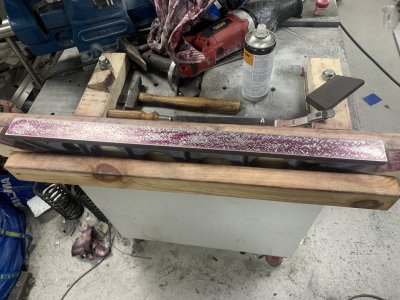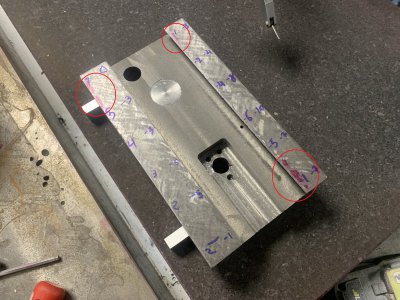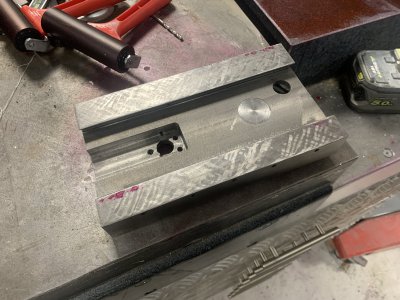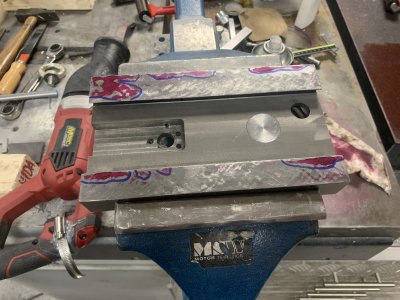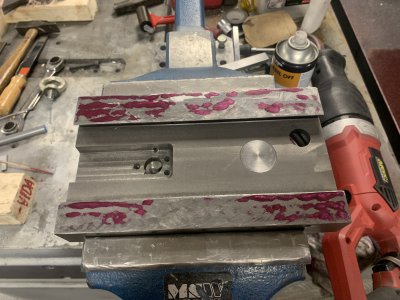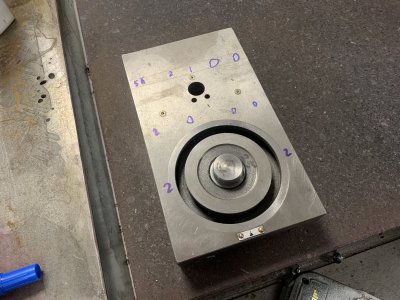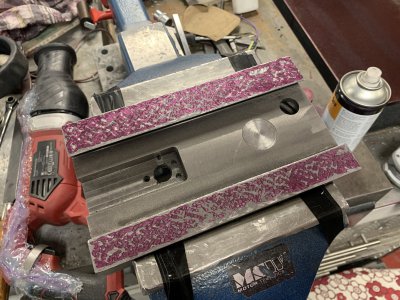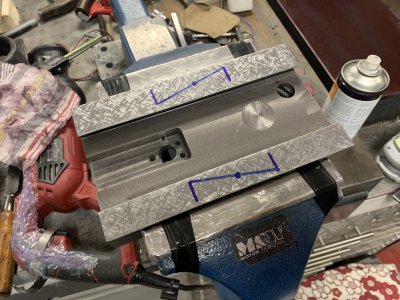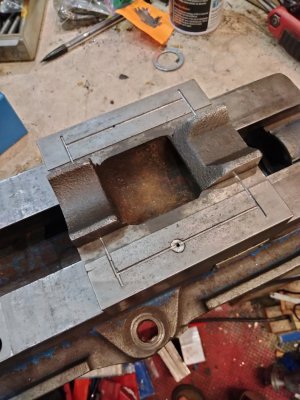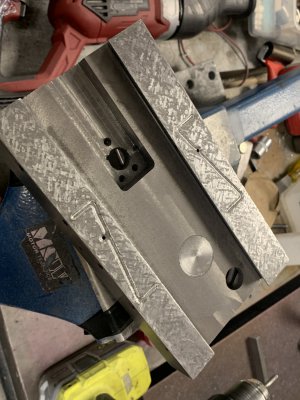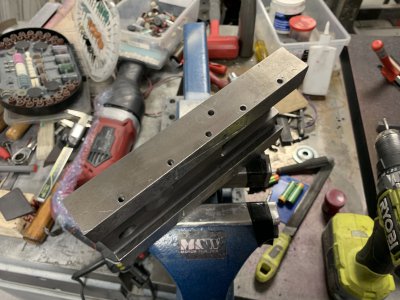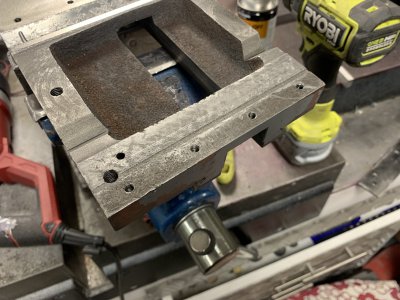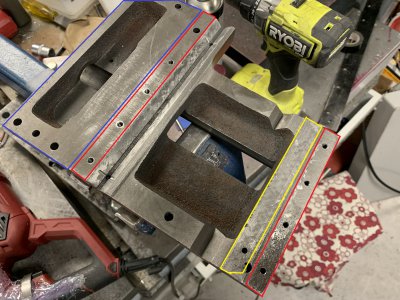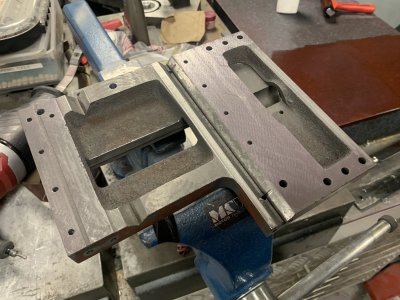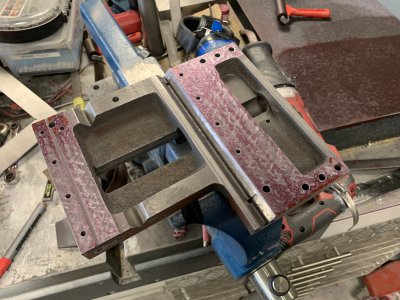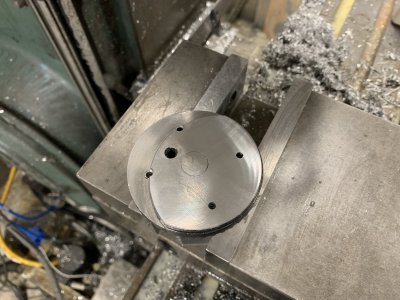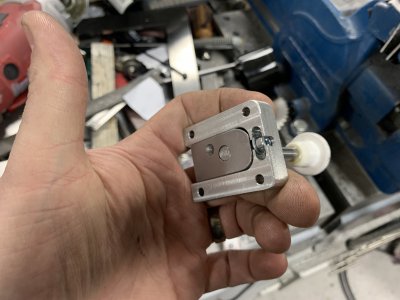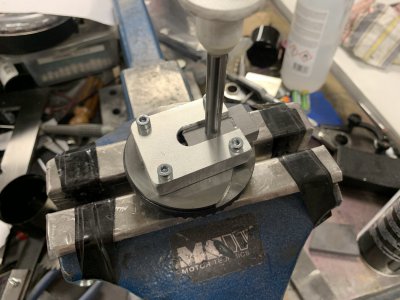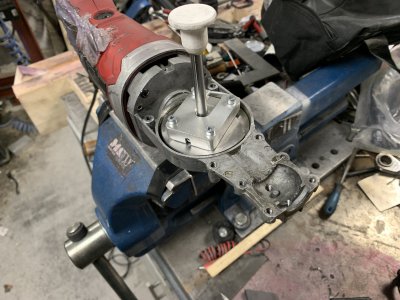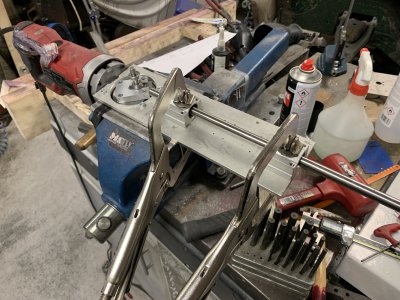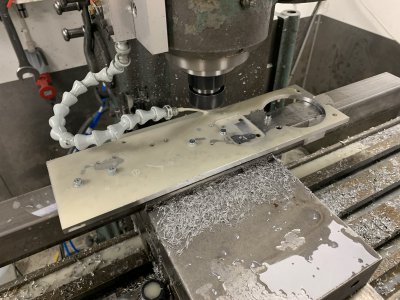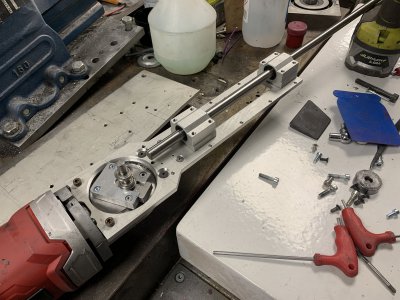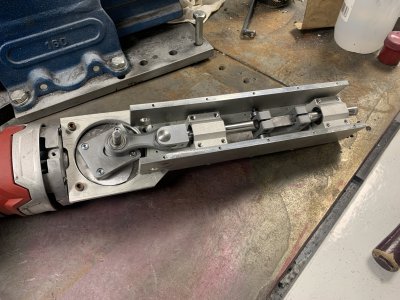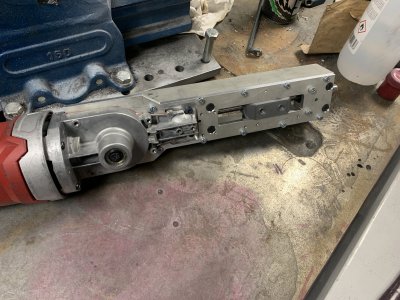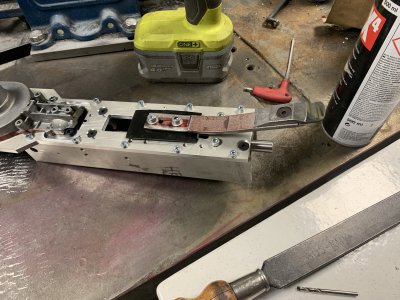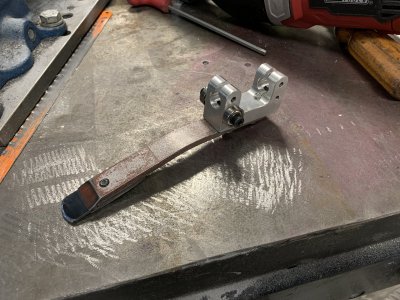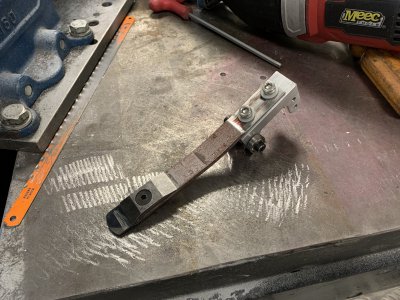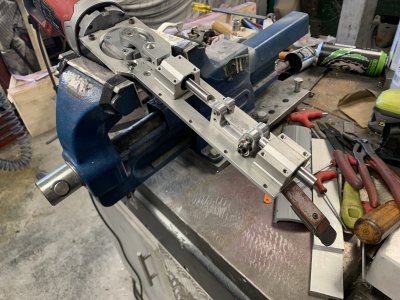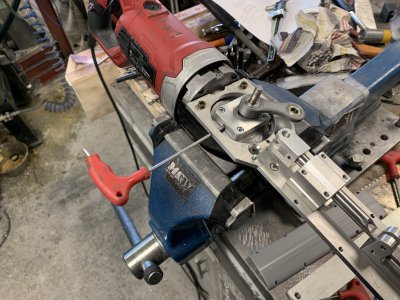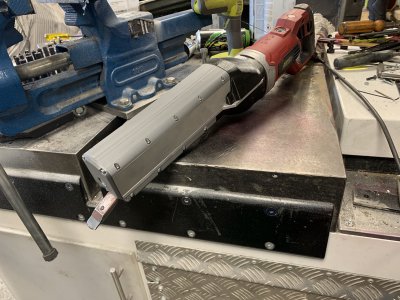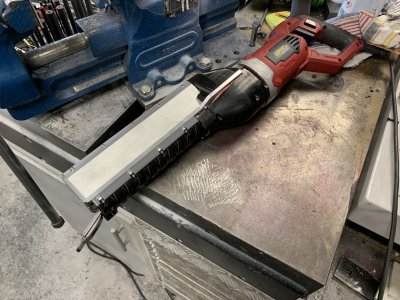- Joined
- Nov 7, 2019
- Messages
- 434
Tweaked the tool a bit more.
Sharpened the blade with a 3000 grit diamond blade and bent the shank down, this made a massive difference to how it cuts and it's now really easy to get consistent scrapes and get them exactly where I want them.
I think the most important thing here is when I push down onto the surface, the blade is still going along the surface whereas before I had to angle the entire machine down and basically punch the carbide into the surface just to reach.
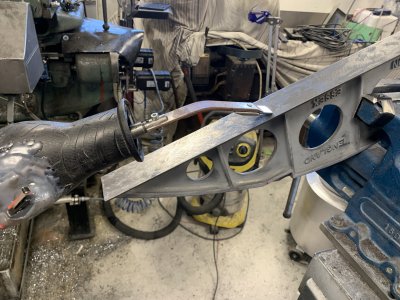
Holding onto the machine and controlling on/off and speed was another huge issue when it came to comforts.
This was a quick'n'dirty fix to that ...
Hoseclamp around the trigger so I can set the speed with a screwdriver and then a new button that overrides the trigger, basically my new on/off button.
Just secured and insulated with hotglue but whatever works so I can get this done, will probably revisit this and make a better machine in the future.
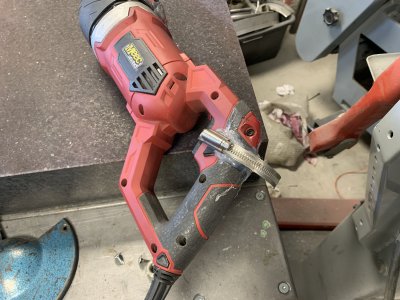
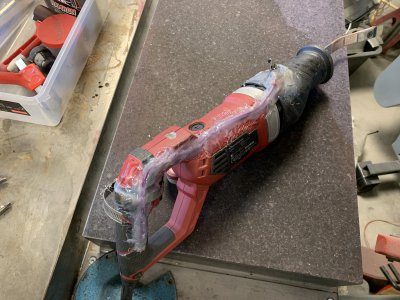
This really helped the comfort factor of using it, the machine new rests along my forearm with the handle going into my elbow crease and my thumb resting on the on/off switch.
With my left hand I can grip way up front on the handle to achieve a really stable and fine control, definitely way more enjoyable than hand scraping.
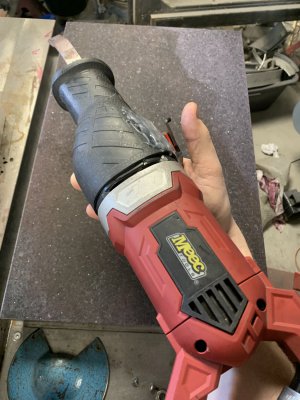
I think I'm nearing full coverage now and am a lot more careful when looking at what to scrape away, trying to identify what's real low spots and what's not.
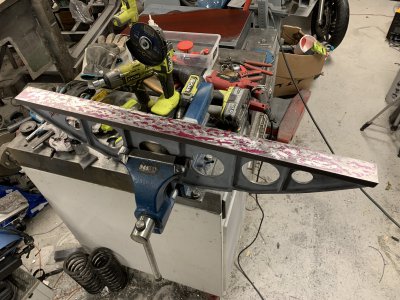
Still area scraping rather than going for checkerboard but I suspect I need to change my tactics there soon.
One thing that makes me really happy about the power scraper is that it makes it really easy to get consistent scrapes and not gauge the surface, I can only imagine how much fun it must be with a "proper" power scraper.
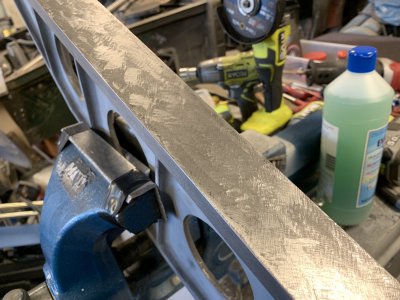
Sharpened the blade with a 3000 grit diamond blade and bent the shank down, this made a massive difference to how it cuts and it's now really easy to get consistent scrapes and get them exactly where I want them.
I think the most important thing here is when I push down onto the surface, the blade is still going along the surface whereas before I had to angle the entire machine down and basically punch the carbide into the surface just to reach.

Holding onto the machine and controlling on/off and speed was another huge issue when it came to comforts.
This was a quick'n'dirty fix to that ...
Hoseclamp around the trigger so I can set the speed with a screwdriver and then a new button that overrides the trigger, basically my new on/off button.
Just secured and insulated with hotglue but whatever works so I can get this done, will probably revisit this and make a better machine in the future.


This really helped the comfort factor of using it, the machine new rests along my forearm with the handle going into my elbow crease and my thumb resting on the on/off switch.
With my left hand I can grip way up front on the handle to achieve a really stable and fine control, definitely way more enjoyable than hand scraping.

I think I'm nearing full coverage now and am a lot more careful when looking at what to scrape away, trying to identify what's real low spots and what's not.

Still area scraping rather than going for checkerboard but I suspect I need to change my tactics there soon.
One thing that makes me really happy about the power scraper is that it makes it really easy to get consistent scrapes and not gauge the surface, I can only imagine how much fun it must be with a "proper" power scraper.



